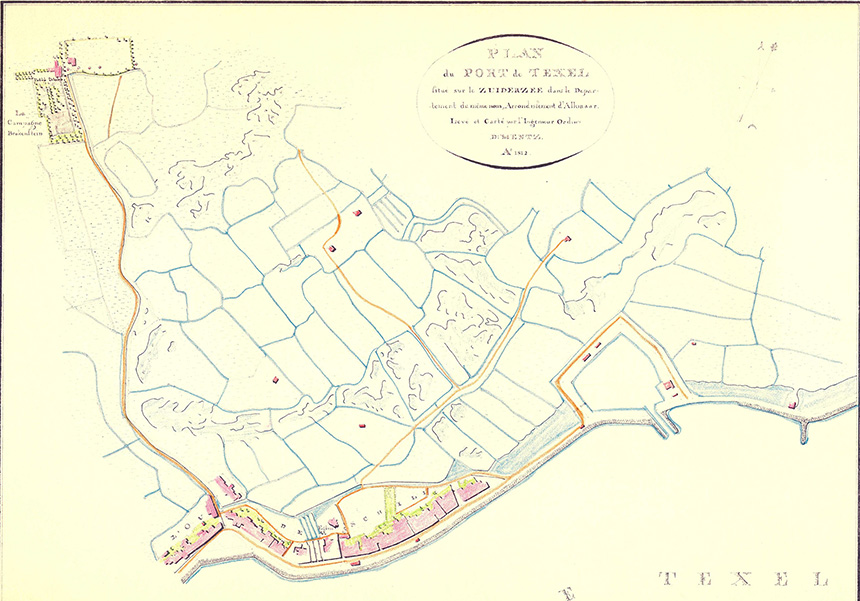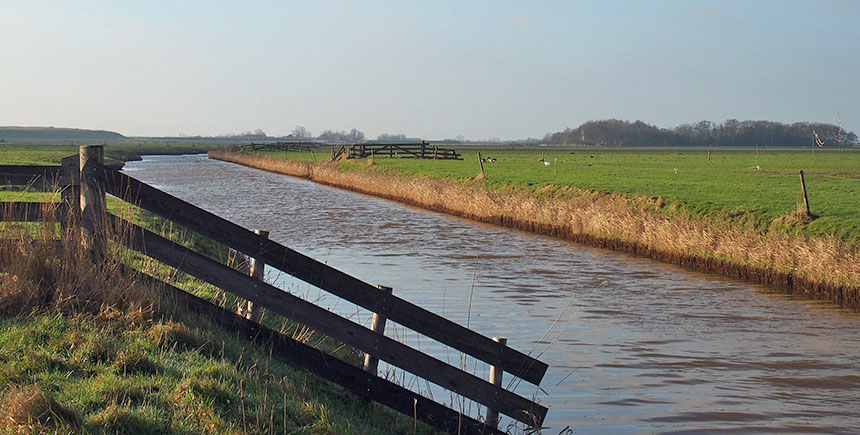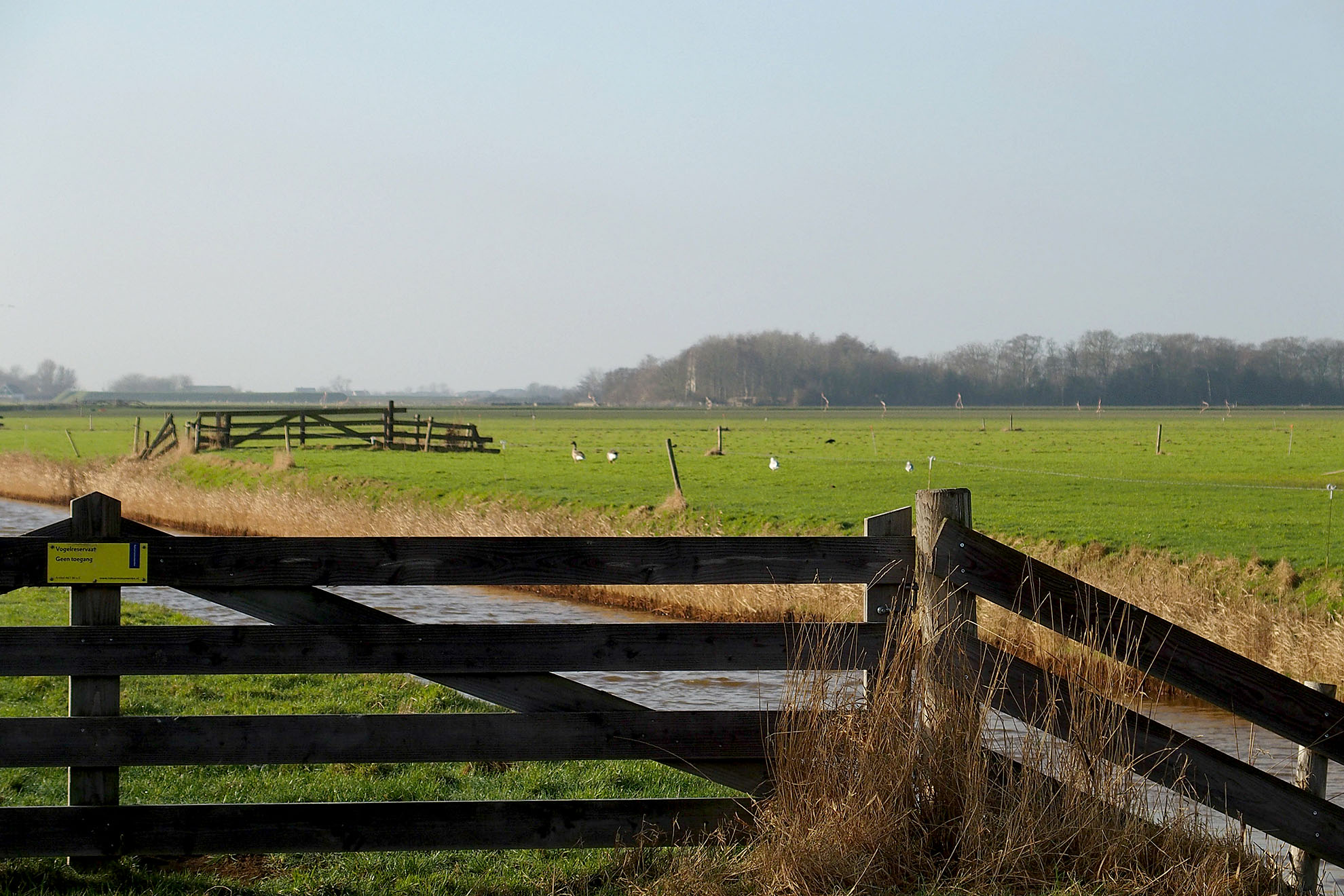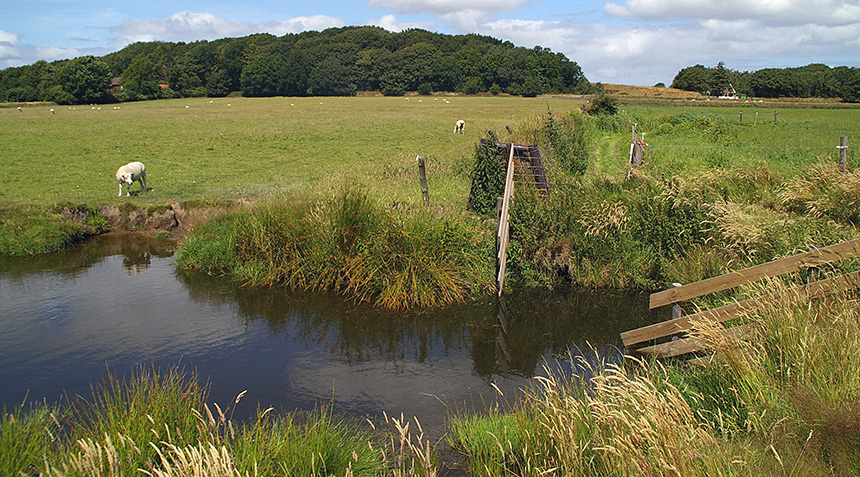Mielanden meadows
As soon as you see water ditches in the landscape near Oudeschild, you’re in the ‘mielanden’ meadows. The countryside at the foot of the Hoge Berg hills once consisted of salt marshes, on which the farmers let their livestock roam freely. In the second half of the Middle Ages, the dyke and sluice construction were developed further, making it possible to reclaim the salt marshes as agricultural land. On Texel this was directed by a monastic order.

The eastern 'mielanden' around 1800
Lease in May
After the land reclamation process, this meadowland became the property of land owners. Especially in the summer, when the meadows on the Hoge Berg were too dry, the farmers brought their livestock to these meadows. The lease had to be paid in May.
Brackish and marshy
The meadowlands lie below sea-level. Clay was also often extracted here, resulting in an even lower soil level. This means that seawater can seep through the pores of the sea dyke. The water in the ditches is therefore brackish and this creates rich plant diversity.
Healthy
Many of the rare brackish water plants were renowned for their medicinal use. A sick sheep was left to graze in the meadows for longer. The name of the plot the ‘Apotheek’ (the pharmacy) is a reminder of this traditional use.
Meadow birds
Traditionally, farmers didn’t start mowing or haymaking before July 1st. That means that before that date, black-tailed godwits, lapwings, redshanks and oyster catchers were able to breed undisturbed. Birdwatchers were keen to go out on expeditions during this period.
Drainage

After the Second World War, agriculture in the Netherlands was modernised on a large scale and this was also the case on Texel. Ground water had to be lowered in many places so that livestock could graze on the land earlier in the year. A wide waterway was dug through the meadowlands, ditches were given straight embankments and the pumping station at the Schans ensured that more rainwater was discharged into the Wadden Sea. This did not have a beneficial effect on the brackish water flora or meadow birds in the area.
Nature reserve
Natuurmonumenten now manages a number of the grasslands which reflect the character of the earlier meadowlands. Agricultural use is coordinated towards optimal countryside management. This reserve is called ‘Büttikoffers Mieland’. Büttikoffer was a Swiss zoologist and chairman of the Dutch bird protection society ‘Vogelbescherming Nederland’ from 1919 to 1924.
Widened embankments
The marshy character of the original meadowlands is also being restored in other places. Organisations for water and countryside management are working together with farmers in order to create gently sloping embankments wherever possible. In this way, new habitats are being formed for wetland plants, at the same time creating new opportunities for the animals which thrive in them.










